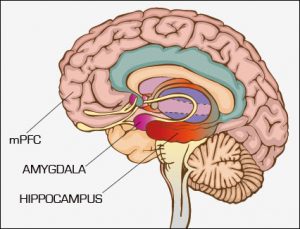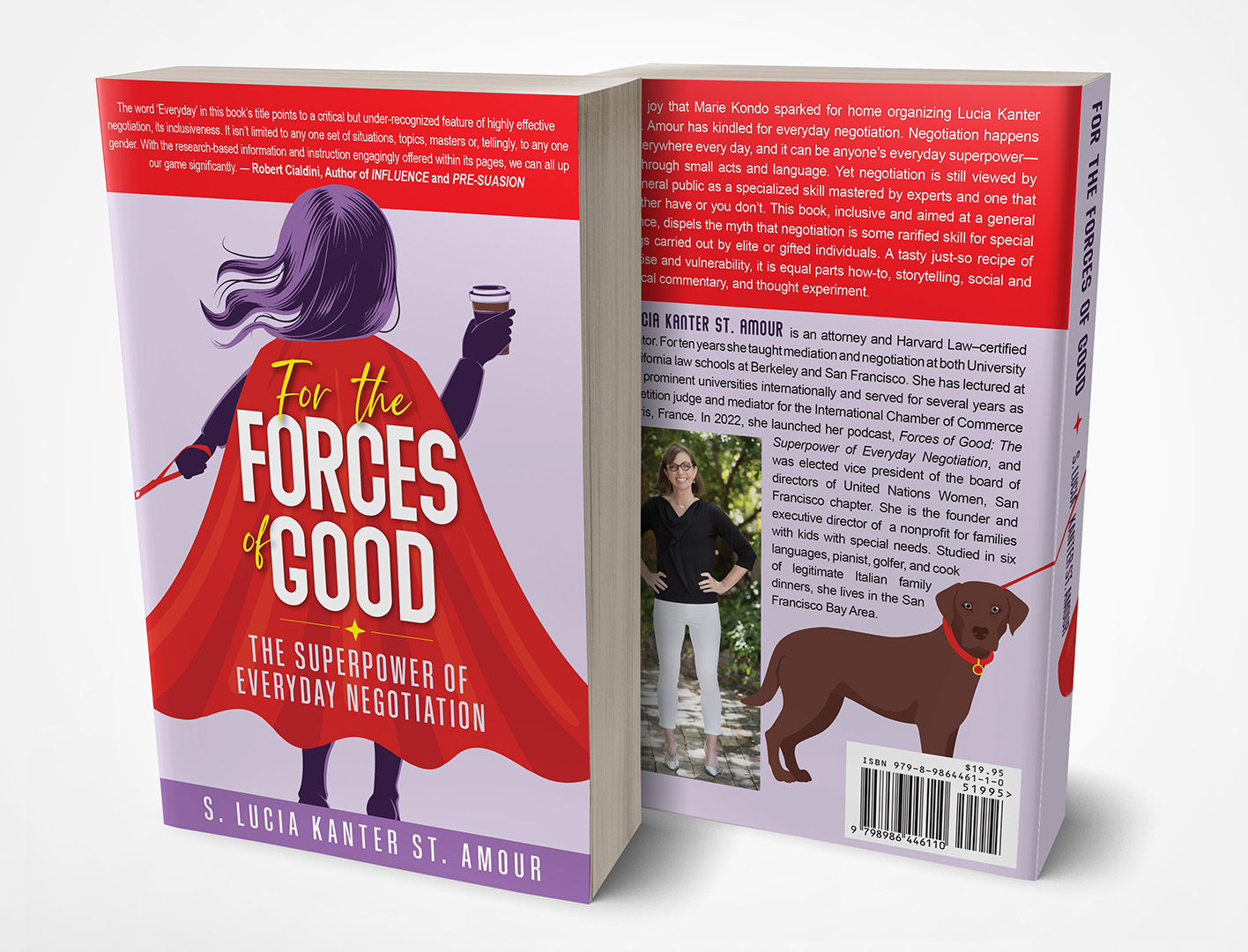Jan 10, 2021
 Abstract: Events in our Nation’s Capitol not even a full week into 2021 have sparked numerous articles, discussions, and questions about the crises of our country, the divisiveness of its people, and human nature in general. This Primer in Neuroscience, Emotions and how they impact decision-making and human conduct when in crises may help demystify the myth of rationality to gain an understanding of why people in conflict behave the way they do.
Abstract: Events in our Nation’s Capitol not even a full week into 2021 have sparked numerous articles, discussions, and questions about the crises of our country, the divisiveness of its people, and human nature in general. This Primer in Neuroscience, Emotions and how they impact decision-making and human conduct when in crises may help demystify the myth of rationality to gain an understanding of why people in conflict behave the way they do.
As a mediator, I work with people in conflict – and who have been in conflict long enough that they have decided they need my help. I am not a neuroscientist. But a basic understanding of the crossover of neuroscience and dispute resolution can lead to new breakthroughs working with disputing parties in mediations, and also in engaging with people generally in the world – especially now, especially when crises is the status quo for so many people.
So, first things first: when people are in crises, the brain secretes cortisol. Increased cortisol levels impact:
Decision making
Risk assessment
Rational cognition
Focus
“Working memory” (how much information a person can hold, process and use at any given moment)
Perception of “Threat”
The emotional and physiological response is by and large the same for both physical threats (a snake) and emotional threats (“she’s going for full custody of the kids”), and the cognitive response toggles between 3 fundamental levels of functioning: Reptilian (fight or flight, the neural networks related to fear/survival – a very durable network); paleo-mammalian (social bonds, decisions); Neo-cortical (high level executive functions).The exercise of law, engineering, accounting, science, etc. is a neo-cortical activity, but decision-making is a sub neo-cortical activity. So, when someone suddenly shifts position and we think they are acting “irrationally,” it’s that a different part of the brain (the non-executive part) has taken over. The same can be said when the opposite happens (as has become common with accusations of “fake news” and abounding conspiracy theories of late): someone refuses to shift their mindset, even faced with objective facts to discredit their original opinion or position (see this Blog’s 6/1/2016 piece on “Confirmation Bias”). Even the common act of getting angry at one’s kids is a core relational theme (more on that below) leftover from the Reptilian brain (“my progeny is in danger and I need to act”). But if the Executive / higher brain reappraises in time, it can ask whether anger or fear or maligning the other person is really the appropriate response to the situation. Think of how different our interactions might be, and how many explosive situations might be defused, if more of us recognize when this is happening.
The brain employs a 3-goal system:
Avoid: sticks (threats, penalty, pain)
Approach: carrots (rewards)
Attach: to other people (bonding)
Although we are wired to cooperate socially and to bond, we are very reactive to threats, and the brain has a Negativity Bias: this means the Sympathetic nervous system lights up like a Christmas tree at even a whiff of a threat, and that “sticks” are more impactful than “carrots!”
Consider for a moment your Amygdala hippocampus system (labeled in the image to the right). It is primed to label experiences negatively and will flag a negative experience prominently in the memory. With ambiguous communication, this means that IF a negative inference can be made, it WILL be made, in lieu of a positive interpretation. The negativity bias is so robust that it takes 5 positive interactions to undo a single negative one. Thus, people will do more to avoid a loss than realize a gain; and the Avoid system is routinely hijacking the Approach and Attach system. The result of threat reactivity is that people in a dispute overestimate threat and underestimate opportunity in their initial appraisals. If nothing or no one (such as a mediator) helps them reappraise that the snake is a stick, the brain continues to pump cortisol and reinforce stress. This happens in everyday situations, not just in national news when a mob of thousands storms the Capitol (is anyone remembering an argument with your spouse or significant other at this point?) The cost of not steering people towards reappraisal is that actions and decisions while feeling threatened lead to over-reactions, which causes other people to feel threatened, and a vicious cycle ensues. The Approach system is inhibited, thus limiting options and opportunities.
the image to the right). It is primed to label experiences negatively and will flag a negative experience prominently in the memory. With ambiguous communication, this means that IF a negative inference can be made, it WILL be made, in lieu of a positive interpretation. The negativity bias is so robust that it takes 5 positive interactions to undo a single negative one. Thus, people will do more to avoid a loss than realize a gain; and the Avoid system is routinely hijacking the Approach and Attach system. The result of threat reactivity is that people in a dispute overestimate threat and underestimate opportunity in their initial appraisals. If nothing or no one (such as a mediator) helps them reappraise that the snake is a stick, the brain continues to pump cortisol and reinforce stress. This happens in everyday situations, not just in national news when a mob of thousands storms the Capitol (is anyone remembering an argument with your spouse or significant other at this point?) The cost of not steering people towards reappraisal is that actions and decisions while feeling threatened lead to over-reactions, which causes other people to feel threatened, and a vicious cycle ensues. The Approach system is inhibited, thus limiting options and opportunities.
*Take away: it is more likely that people will deviate from rationality than be consistently rational. Recognize how powerful it is to know how to identify which part of the brain is working, when and why. Mediators use active listening, reframing, and timing of breaks to help the people’s brains reappraise and stop the vicious cycle. So can you, with practice . . .
A brief word on the role of emotions:
Here is what I have learned from my 30+ hours of training from the Paul Ekman Group and Dr. Ekman’s book Emotions Revealed: Core Relational Themes inform how we deal with people in the world. Our cell assemblies have, over thousands of years, created a sturdy emotion alert database. This database serves an important purpose:
FEAR protects us; our lives are saved because we are able to respond to threats of harm protectively, without thought.
DISGUST reactions make us cautious about indulging in activities that literally or figuratively might be toxic.
SADNESS and despair over loss signals to others that we may need help.
Even ANGER is useful; it warns others, and us as well, when things are thwarting us.
Probably the most important nugget I learned from Paul Ekman’s book Emotions Revealed is the concept of the Refractory State – this is the time during which our thinking cannot incorporate information that does not fit, maintain, or justify the emotion we are feeling. For example, have you ever tried to apologize to someone while they are still mad at you? It’s futile. A Refractory State lasts an average of 20 minutes, and the person experiencing the strong emotion simply cannot take in any new information until the refractory state has passed. Recognizing a refractory state can be key in terms of what you do next. When you identify the refractory state, understand that the Executive level of the brain is not operating during this refractory period – and it may be wise to step away from the immediate situation to take a break.
Take-Away: Rationality is a myth. Instead, human behavior and circumstances are predictably irrational (the title of another book I recommend, by Dan Ariely). Rational choice theory is but one approach to conflict, and not necessarily the most effective one where emotions, distrust and suspicions simply cannot be suspended even among people of good will and reason. With even a simple understanding of neuroscience and emotions, anyone can learn to manage the human experience effectively and without relying upon faulty and insufficient ideology of how one “should” behave or “should” approach conflict and decision-making.
Lucia Kanter St. Amour, Pactum Factum Principal
Oct 20, 2020
 Recently on social media, a short riddle circulated that exemplifies one of the many so-called secret tools that mediators help parties employ when seeking to resolve disputes.
Recently on social media, a short riddle circulated that exemplifies one of the many so-called secret tools that mediators help parties employ when seeking to resolve disputes.
First, the riddle: In a square room there is a cat in every corner of the room. In front of every cat there are 3 cats. How many cats are there in all?
Hint: it is not a math problem.
The key to solving the riddle is in perspective shifting. Experienced mediators are able to solve this riddle in fairly short order because we are trained in perspective shifting. What does that mean? The concept is simple (though, like everything else, requires practice to be effective): when we work with parties involved in a dispute, we do so by examining the problem (and possible solutions) from various angles. We ask not only “How would a judge view the situation?” but “How would an engineer view it?” An accountant? An elementary school teacher? A nurse? A stockbroker? A hotel manager? Notice that we don’t necessarily ask the parties in a dispute to imagine the perspective of the other party (which may be too difficult, given the degree of emotions and biases in play), but from that of an objective party in a particular position. It is a technique that can break through impasse, dodge personal bias, help save face, and inspire proposals for durable and pragmatic solutions. And the best part is that one doesn’t need a credential in engineering, accounting, teaching, nursing, investment brokerage, or even being a cat to employ the technique.
An old allegory (possibly dating to the 1920’s, though its origin is in dispute) illustrates how parties can often feel and behave when stuck on their own narrative – their own perspective. It tells of a police officer who comes across a drunken man intently searching the ground near a lamppost. The officer asks him the goal of his quest. The inebriate replies that he is looking for his car keys, and the officer helps for a few minutes without success then asks whether the man is certain that he dropped the keys near the lamppost. “No,” is the reply, “I lost the keys somewhere across the street.” “Then why are looking over here?” asks the perplexed officer. “The light is much better here,” the intoxicated man responds.
Moral: failure to explore places other than where it is convenient and comfortable to see the world will often leave you stuck in the same place.
On that note, consider the cat riddle from the perspective of the cat: if you are one of the cats in one of the corners facing into the square room, what do you see? From that vantage point, you see the three other cats “in front of” you. Thus, assuming the law of gravity applies (i.e. no cats occupy the 4 corners of the ceiling), the answer is . . .
[Do not read past this sentence if you are still trying to work it out on your own]
. . .
Four.
Lucia Kanter St. Amour, Pactum Factum Principal
Sep 8, 2020
 Abstract: History of the handshake, its societal and business uses, its importance in mediation and negotiation, and what lies ahead now that the handshake has become a casualty of Covid-1.
Abstract: History of the handshake, its societal and business uses, its importance in mediation and negotiation, and what lies ahead now that the handshake has become a casualty of Covid-1.
The handshake: it was our loyal and familiar anchor for millennia. It operated as a widespread social custom to forge political alliances, seal business mergers, and inform telepathic fathers about the “true” character of their daughter’s latest beau. Now rendered verboten by Covid-19, the handshake was at least 2,800 years old, as evidenced by an early limestone dais, carved in the mid-ninth century B.C.E., depicting the Assyrian king Shalmaneser III hand in hand with a Babylonian ally. Historians believe that an early purpose of the handshake was to show that you weren’t holding or concealing a weapon (the up-and-down motion would dislodge a dagger that had been hidden up a sleeve). It has also been used as a way to assert dominance and signal competitiveness. In some cultures, the handshake almost took on the role of a contract.
Throughout history and across many Western cultures, greeting each other with a handshake at the beginning of a negotiation, even if perfunctory, has been an important tool to convey the willingness to cooperate towards reaching a deal – and later to secure agreement on a point. And although a handshake alone does not offer either party sufficient protection should things go wrong (as in Neville Chamberlain’s famous handshake deal with Adolf Hitler over the ill-fated Munich Agreement in 1938), it’s efficient, it’s personal, and it gets things moving. Even before the Coronavirus pandemic, some may have already dismissed the custom as too medieval to be meaningful in the modern, digital world. But famous deals from depictions of Cleopatra to Google (and Elvis in between) would suggest that its longevity and ubiquity was no accident. Remember the 161-day NBA lockout in 2011? It was finally resolved with a handshake deal – one with billions of dollars at stake. At a deeper sub-conscious level, when people participated in the social norm of shaking hands over a deal, they were taking part in an age-old tradition that exhorted them to behave honorably.
But, alas, the Coronavirus rendered the steadfast handshake taboo, even before Shelter In Place orders were mandated. Since then, Dr. Anthony Fauci sounded the death knell in April, when he proclaimed this about our old reliable companion: “I don’t think we should ever shake hands again.”
Thus ends (or at least cryogenically hibernates) the de rigeur, millennia-old global standard for greetings and business. The void leaves us feeling, well . . . a bit empty-handed.
Beyond the handshake, other cultural customs have been abandoned (perhaps for good) as a result of the pandemic. For example, as a person of Italian descent, I greet friends and family in Italy (and Italian friends here in the States) with a quick, alternating kiss on each cheek (called a bacetto). This custom dates back to the Ancient Romans. The French embrace a similar convention harkening back to the French Revolution, when double-cheek-kissing upon greeting someone was introduced. High fives and fist bumps among teammates and colleagues as encouragement or to celebrate a “win” have similarly fallen out of fashion in our brave new world. Without these faithful “old world” social and cultural gestures to serve as punctuation marks, negotiated deals feel incomplete.
So what now? Do we place a hand over our heart as a salutation and departure to bookend our negotiations and mediations? Do we form the peace sign with our fingers? How about a “handshake” button in our widgets, which parties click for agreement, a la YCombinator? Particularly with the increased popularity of Zoom mediations (which are most likely here to stay, is there some talismanic phrase or ritual (one that inspires cooperation, connectedness and commitment, mind you) that we develop to open and close a mediation session? While I don’t have an “aha!” answer, I am confident we imaginative and resourceful humans (and especially mediators) will evolve into a new custom.
In the meantime, perhaps my Italian compatriots will bob from side to side while kissing the air from a 6-foot distance; and high-powered executives, movie producers and real estate moguls still have the backs of receipts and cocktail napkins to seal the deal (as long as they immediately wash their hands).
Lucia Kanter St. Amour, Pactum Factum Principal
Jul 14, 2020
 Masks are nothing new. They have been used in rituals and ceremonies dating to 7000 BCE.
Masks are nothing new. They have been used in rituals and ceremonies dating to 7000 BCE.
Two widespread uses of masks dominate history and culture. The first is for festivals and ceremonies. Perhaps most commonly known is the Carnevale of Venice, Italy, rooted in the 13th century. Carnevale is also known as Marti Gras, famously celebrated in New Orleans here in the States. Historically this is the 2-week raucous festival of indulgence preceding the 40- day deprivation period of lent. During Carnevale, the usual expectations of desired social behavior are suspended.
It functions partly as a reversal ritual, allowing the primitive element of human nature to express itself.
The second usage is among legends and heroes: these characters conceal their true identity behind a mask to carry out deeds as vigilantes on behalf of the greater public good. The first examples emerged in the early 1900’s:
Zorro was the alter ego of Don Diego de la Vega during the Spanish colonial period. He defended commoners and indigenous people of California. During that same decade we were also introduced to The Scarlet Pimpernel: chivalrous Englishman, Sir Percy Blakeney, in the Time of Terrors in France.
Garnering a cult-like following in the late 1980’s from the film, The Princess Bride, The Man in Black operated as alter ego for Westley: simple farm boy turned pirate – in love with Princess Buttercup. While clumsily and half-heartedly combatting Westley, the benign giant named Fezzik inquires, “Why do you wear a mask? Were you burned by acid, or something?” Westley prophetically replies, “Oh no. It’s just they’re terribly comfortable. I think everyone will be wearing them in the future.”
These masked figures share certain traits: they have a signature weapon, usually a sword, which they employ with expert prowess. They are physically agile and skilled escape artists. They are intelligent and able to outwit their foes.
Now that masks are mandatory for all, they are used (or not used) as fashion and political statements. The overarching question is this: Hedon or Hero? Will we draw upon our best selves to unite widely, ensure Black Lives Matter, heal deep grief, cultivate diversity, equity, inclusion and belonging? Will we surrender to our more savage nature and breed mistrust between communities; depend racism and hatred? The answer to that is still an individual choice.
Lucia Kanter St. Amour, Pactum Factum Principal
Jun 5, 2020
 We (Americans and many diverse people in organizations) have borne witness to this moment before: there was a terrible event, we were outraged, we reacted, then it went away. Yet systemic racism hasn’t changed. How can leaders meaningfully respond to racial tragedies? This was the subject of a webinar and Forbes article by the Neuroleadership Institute. To move forward first requires recognition that people are in different places. Then, three critical steps – in this specific order – are necessary to create positive change (relevant to organizations, teams and families):
We (Americans and many diverse people in organizations) have borne witness to this moment before: there was a terrible event, we were outraged, we reacted, then it went away. Yet systemic racism hasn’t changed. How can leaders meaningfully respond to racial tragedies? This was the subject of a webinar and Forbes article by the Neuroleadership Institute. To move forward first requires recognition that people are in different places. Then, three critical steps – in this specific order – are necessary to create positive change (relevant to organizations, teams and families):
(1) Listen Deeply:
Listen so that people feel deeply heard (like they have never felt before): listen to understand (not to respond, to defend, to countermand – or pretending to listen while really just waiting for your turn to talk). At a minimum this means removing obstacles and distractions to listening to others. Even on Zoom, people know when you are listening deeply and when you are not. It is difficult to listen as a leader when you are also feeling anxious and having your own brain’s threat response. Moreover, listening to people with strong emotions can be very uncomfortable (and cause you to feel strong emotions, which means you as the listener need to be mindful and place your brain in a low threat state). We also have a tremendous number of built-in biases that are very difficult to mitigate. Many of them cannot be mitigated. One of them is Experience Bias, which can be reduced by truly hearing diverse perspectives (sitting in someone else’s world. This is very effortful). Another form of distraction is relating so closely to the experience of the speaker that it causes a “me too” reaction and focus on your own story. To really listen and be there in the moment can be draining, but the science reinforces that you must do this well and focus in on the speaker. This means, as a leader, taking care of yourself better than ever so that you can put yourself in the right mental framework to look out for others. On the other side: the experience of being heard is one of the few things that really calms a stressed state of mind. Most of the time we are not tuned in to what others are experiencing in their daily lives.
(2) Unite Widely: But step one isn’t enough. If leaders stop at step one, we will keep having the same conversations and conflicts over and over. For solutions to happen, people need to feel they are on the same team. A deeply rooted process in the brain plays out when humans interact: it is a fairly binary categorization known as “in-group” or “out-group.” The science of this is kind of scary: with every human we encounter, we decide if they are in-group (like us / aligned goals) or out-group (different from us / competing goals). We tend to default to the latter. When someone is an out-group member, we tend to process any information from them in a shallow way. But any information from an in-group member, is processed into thinking your own thoughts – as if you are talking to yourself. Even physical movement of someone in-group or out-group is processed differently (e.g. Black man reaching for cell phone processed by White police officer as reaching for gun). Secondly, we have very little empathy for people in our out-group. This makes us capable of doing very bad things to people who have different goals from us. Another factor is motivation: we are invested in seeing in-group members win; but this is reversed with out-group members. Even when out-group members tell us a positive story, we don’t feel the triumph for them that we do with in-group members. Inclusion means proactively including everybody. The good news is that it doesn’t take much to create an in-group among very diverse people – but the key is identifying a common goal
What are the mechanics of inclusion? We introduce Dr. David Rock’s SCARF model, which summarizes the neuroscience observation that the brain treats social threats and rewards with the same intensity that it treats physical threats and rewards. The SCARF model accounts for five domains of human social experience: Status, Certainty, Autonomy, Relatedness and Fairness. These domains also serve as 5 strong threats that the brain tracks over time. When threatened, each one activates the pain center of the brain. So, if you have multiple SCARF factors causing threat, as in the George Floyd tragedy (an accumulation of widespread, systemic SCARF threats over an extended period of time), the situation is explosive. But these same factors also can also be used to unite widely.
Take away: leaders need to find shared goals in an organization, team, or family. When we do that, our differences become diversity mechanisms that help us reach our shared goal. Until we unite around shared goals, we remain in the in-group / out-group paradigm and our differences continue to divide us.
(3) Act Boldly: Vision without action is a daydream; action without vision is a nightmare (as Khalil Smith’s father used to say). We’ve been here before. Why didn’t things change? (1) False promises and failed expectations when an expectation was created to do “big things.” (2) We remained stuck in story-telling, and systemic habits did not change. No big change happens in an announcement. An announcement is a start. But if it doesn’t scare you a little (“we’ve never done that before”), it isn’t truly bold. Bold action is messy, difficult, and resource consuming. But normalcy must be refuted. As Dante Alighieri wrote: “The hottest places in Hell are reserved for those who, in a period of moral crises, maintain their neutrality.”
What are some examples of what organizations can do that is “really bold” (beyond writing a check): (1) Provide free de-escalation training to all law enforcement (The Neuroleadership Institute is doing this); (2) Local governments retraining law enforcement standards and practices for peaceable protests and crowd control; (3) Meaningfully reviewing your organization’s culture for allowing employees a voice, and then improving and building on that; (4) Check your Diversity Training – it might be making people MORE biased, especially if it’s mandatory. (5) Change habits (individually and organizationally). This means, first, figuring out which ones matter; then, following up with a practical plan and working collectively in a way that is impactful to reshape them.
On a parting note: imagine the systemic impact of matriculating a generation of leaders from a young age, who are able to adopt and act upon these principles. Peer mediation in schools is one way to develop a generation of thoughtful listeners and impactful peacemakers who become paradigm shifting leaders.
Lucia Kanter St. Amour, Pactum Factum Principal
May 1, 2020
 More and more disputing parties and attorneys are turning to online dispute resolution (ODR) during extended Shelter In Place, and online mediation is most likely the new “normal,” here to stay. It may be reassuring to know that this is not a new trend, and the platform for ODR has been in development and use for many years.
More and more disputing parties and attorneys are turning to online dispute resolution (ODR) during extended Shelter In Place, and online mediation is most likely the new “normal,” here to stay. It may be reassuring to know that this is not a new trend, and the platform for ODR has been in development and use for many years.
Colin Rule has been a pioneer in the field of ODR for over 25 years, and we first met him in the early 2000’s when he was developing the Ebay and PayPal dispute resolution systems, the first large scale ODR platform. In this podcast for the American Bar Association, Colin discusses the origins of ODR, and how it has evolved over the years and is now used by courts with matters ranging from traffic citations, to property tax appeals, to family and employment law cases. Ultimately, all ODR technologies evolve out of face-to-face practices because dispute resolution has historically been a face-to-face experience.
At Pactum Factum, we offer “in person” virtual mediations using Zoom. Pactum Factum Principal Lucia Kanter St. Amour is a mediate.com Certified Online Mediator. Unlike the use of algorithms and other technologies used for simple e-commerce disputes, the “in person” aspect of mediation is quite an important psychological component of the process. Research shows that trust in an experienced mediator is the same whether a mediation participant interacts with that mediator via video or face-to-face (i.e. physically in the same room). After some pre-mediation preparation, we join the meeting as a group for the initial joint session, and then enable Zoom Breakout Rooms (or not – we have other options) for the private caucusing. The beauty of online mediation is it’s versatility: it can be scheduled in smaller chunks than the traditional “one big day” of brick and mortar mediation, and we can blend various modalities throughout the process. For more information about online mediation, visit our Forms and FAQ’s pages.
Lucia Kanter St. Amour, Pactum Factum Principal
 Abstract: Events in our Nation’s Capitol not even a full week into 2021 have sparked numerous articles, discussions, and questions about the crises of our country, the divisiveness of its people, and human nature in general. This Primer in Neuroscience, Emotions and how they impact decision-making and human conduct when in crises may help demystify the myth of rationality to gain an understanding of why people in conflict behave the way they do.
Abstract: Events in our Nation’s Capitol not even a full week into 2021 have sparked numerous articles, discussions, and questions about the crises of our country, the divisiveness of its people, and human nature in general. This Primer in Neuroscience, Emotions and how they impact decision-making and human conduct when in crises may help demystify the myth of rationality to gain an understanding of why people in conflict behave the way they do. the image to the right). It is primed to label experiences negatively and will flag a negative experience prominently in the memory. With ambiguous communication, this means that IF a negative inference can be made, it WILL be made, in lieu of a positive interpretation. The negativity bias is so robust that it takes 5 positive interactions to undo a single negative one. Thus, people will do more to avoid a loss than realize a gain; and the Avoid system is routinely hijacking the Approach and Attach system. The result of threat reactivity is that people in a dispute overestimate threat and underestimate opportunity in their initial appraisals. If nothing or no one (such as a mediator) helps them reappraise that the snake is a stick, the brain continues to pump cortisol and reinforce stress. This happens in everyday situations, not just in national news when a mob of thousands storms the Capitol (is anyone remembering an argument with your spouse or significant other at this point?) The cost of not steering people towards reappraisal is that actions and decisions while feeling threatened lead to over-reactions, which causes other people to feel threatened, and a vicious cycle ensues. The Approach system is inhibited, thus limiting options and opportunities.
the image to the right). It is primed to label experiences negatively and will flag a negative experience prominently in the memory. With ambiguous communication, this means that IF a negative inference can be made, it WILL be made, in lieu of a positive interpretation. The negativity bias is so robust that it takes 5 positive interactions to undo a single negative one. Thus, people will do more to avoid a loss than realize a gain; and the Avoid system is routinely hijacking the Approach and Attach system. The result of threat reactivity is that people in a dispute overestimate threat and underestimate opportunity in their initial appraisals. If nothing or no one (such as a mediator) helps them reappraise that the snake is a stick, the brain continues to pump cortisol and reinforce stress. This happens in everyday situations, not just in national news when a mob of thousands storms the Capitol (is anyone remembering an argument with your spouse or significant other at this point?) The cost of not steering people towards reappraisal is that actions and decisions while feeling threatened lead to over-reactions, which causes other people to feel threatened, and a vicious cycle ensues. The Approach system is inhibited, thus limiting options and opportunities.
 Recently on social media, a short riddle circulated that exemplifies one of the many so-called secret tools that mediators help parties employ when seeking to resolve disputes.
Recently on social media, a short riddle circulated that exemplifies one of the many so-called secret tools that mediators help parties employ when seeking to resolve disputes. Abstract: History of the handshake, its societal and business uses, its importance in mediation and negotiation, and what lies ahead now that the handshake has become a casualty of Covid-1.
Abstract: History of the handshake, its societal and business uses, its importance in mediation and negotiation, and what lies ahead now that the handshake has become a casualty of Covid-1. Masks are nothing new. They have been used in rituals and ceremonies dating to 7000 BCE.
Masks are nothing new. They have been used in rituals and ceremonies dating to 7000 BCE. We (Americans and many diverse people in organizations) have borne witness to this moment before: there was a terrible event, we were outraged, we reacted, then it went away. Yet systemic racism hasn’t changed. How can leaders meaningfully respond to racial tragedies? This was the subject of a webinar and
We (Americans and many diverse people in organizations) have borne witness to this moment before: there was a terrible event, we were outraged, we reacted, then it went away. Yet systemic racism hasn’t changed. How can leaders meaningfully respond to racial tragedies? This was the subject of a webinar and 